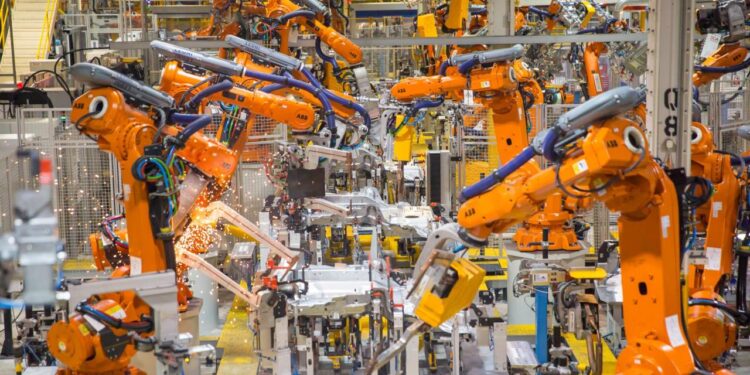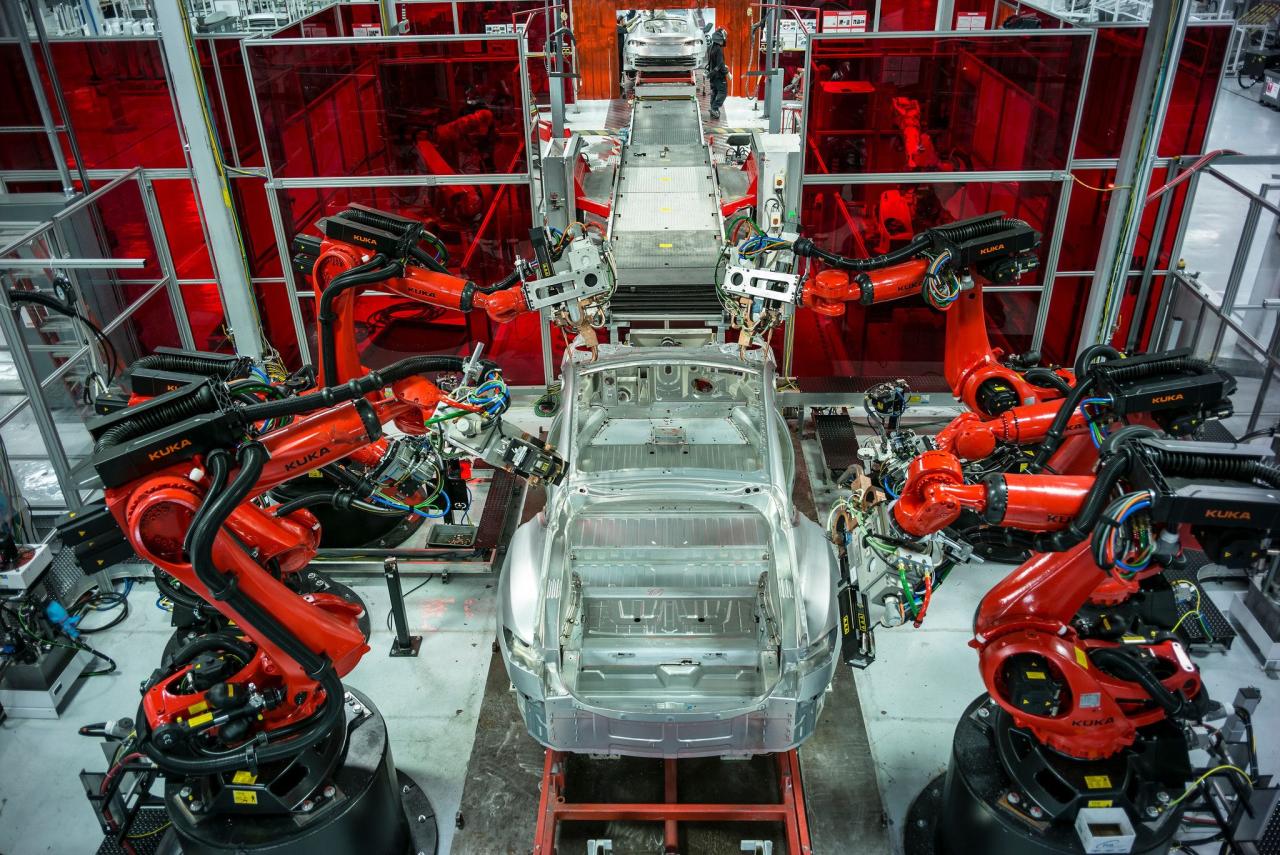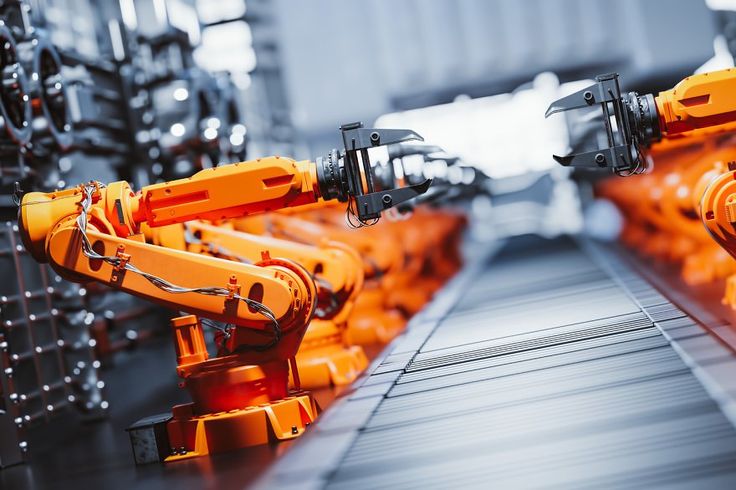The manufacturing sector is undergoing a revolutionary transformation powered by groundbreaking robotics innovations. As traditional production methods give way to advanced automated systems, industries are witnessing an era where precision, efficiency, and adaptability become the norm. This article delves into the transformative role of robotics in shaping the future of manufacturing. It examines the evolution of robotics technology, outlines the critical innovations redefining production processes, and explores the benefits, challenges, and strategic approaches for successful implementation. With insights into real-world applications and future trends, this comprehensive guide serves as a roadmap for businesses striving to remain competitive in an increasingly automated world.
The integration of robotics into manufacturing has redefined the operational landscape, offering unprecedented opportunities for innovation and growth. Modern factories are no longer reliant solely on human labor; they are equipped with intelligent machines that perform complex tasks with exceptional speed and accuracy. As global markets demand faster production cycles, higher quality standards, and lower production costs, robotics has emerged as a key driver of competitive advantage.
In today’s rapidly changing environment, embracing robotic technologies is no longer optional but a strategic imperative. Robotics innovations have expanded beyond simple automation, integrating artificial intelligence (AI), machine learning, and advanced sensor technologies to create systems that can adapt to varying production demands. This article provides an in-depth look at how robotics is revolutionizing manufacturing, focusing on how these innovations are reshaping production processes, enhancing productivity, and setting the stage for the future.
The Evolution of Robotics in Manufacturing
The journey of robotics in manufacturing has been marked by continuous innovation and adaptation. Initially developed to perform repetitive and hazardous tasks, robots have evolved into sophisticated systems capable of executing a wide array of functions that were once the exclusive domain of human workers.
- Early Automation Efforts
- In the early days, robotic systems were primarily used for basic tasks such as welding, painting, and material handling. These early machines were designed to work in controlled environments and offered a significant improvement in speed and accuracy compared to manual labor.
- Introduction of Computer Numerical Control (CNC)
- The advent of CNC technology allowed machines to follow pre-programmed instructions with high precision. This development marked a significant step forward, enabling the automation of complex machining processes and reducing the margin for human error.
- Integration of Sensors and Feedback Systems
- As robotics technology matured, the incorporation of sensors and real-time feedback mechanisms enhanced the ability of machines to adapt to variations in production processes. These systems improved quality control and enabled robots to handle more intricate tasks.
- Emergence of Collaborative Robots (Cobots)
- Unlike traditional industrial robots that operated in isolation, cobots are designed to work alongside human workers. They offer enhanced flexibility and can perform tasks that require a combination of human intuition and robotic precision.
- Advancements in Artificial Intelligence and Machine Learning
- Recent developments in AI and machine learning have further propelled robotics innovation. Modern robots are now equipped with the ability to analyze data, learn from their environment, and make autonomous decisions, thereby improving efficiency and reducing downtime.
Key Innovations Redefining Manufacturing
The current wave of robotics innovations is characterized by a blend of technological advancements that are transforming manufacturing processes. These innovations are not only optimizing production but are also setting new standards for quality and efficiency.
- Smart Automation Systems
- Smart automation integrates robotics with advanced data analytics and IoT connectivity. These systems provide real-time insights into production performance, enabling manufacturers to fine-tune operations and preemptively address potential issues.
- Adaptive Robotic Arms
- Modern robotic arms are designed with enhanced dexterity and precision. They can adapt to different tasks without extensive reprogramming, making them ideal for production lines that require flexibility and rapid changeovers.
- Vision and Sensing Technologies
- Advanced vision systems allow robots to inspect products, detect defects, and perform quality control functions with remarkable accuracy. These technologies ensure that products meet stringent quality standards and reduce waste.
- Robotic Process Automation (RPA) in Production
- RPA extends beyond physical robots to include software solutions that automate administrative and repetitive tasks within manufacturing. This integration streamlines workflows and optimizes supply chain management.
- Energy-Efficient and Sustainable Robotics
- Innovations in robotics are increasingly focusing on energy efficiency and sustainability. New systems are designed to consume less power while maintaining high performance, contributing to greener production processes and lower operational costs.
- 3D Printing and Additive Manufacturing
- Robotics is closely intertwined with the rise of additive manufacturing. Robots are now used to handle and post-process 3D printed components, enabling rapid prototyping and the production of complex, customized parts.
- Autonomous Mobile Robots (AMRs)
- AMRs are designed for material transport within manufacturing facilities. These robots navigate complex environments using advanced mapping and obstacle avoidance technologies, significantly improving logistics and reducing manual labor.
- Integration of Cloud Computing and Big Data
- Cloud-based platforms enable manufacturers to collect and analyze vast amounts of production data. This integration facilitates predictive maintenance, process optimization, and real-time decision-making, further enhancing the efficiency of robotic systems.
Benefits of Robotics in Future Manufacturing
The deployment of robotics in manufacturing brings a host of benefits that extend well beyond increased production speed. These advantages contribute to overall business resilience and create a competitive edge in the market.
- Enhanced Productivity and Efficiency
- Robotics significantly boost productivity by operating continuously with minimal downtime. Automated systems perform tasks faster than human workers and maintain consistent quality, leading to higher overall output.
- Improved Precision and Quality Control
- Robots excel at performing repetitive tasks with high precision, reducing errors and ensuring that products meet exacting standards. The integration of vision systems further enhances quality control, minimizing defects and waste.
- Cost Reduction and Operational Savings
- Although the initial investment in robotic systems can be substantial, the long-term savings are significant. Automation reduces labor costs, minimizes errors, and optimizes energy consumption, leading to lower overall production costs.
- Increased Safety and Risk Mitigation
- By taking over hazardous tasks, robots help improve workplace safety. Automation minimizes the risk of injuries and exposure to dangerous environments, thereby protecting employees and reducing insurance costs.
- Flexibility and Scalability
- Advanced robotic systems offer remarkable flexibility, allowing manufacturers to quickly adapt to changing market demands. Scalable solutions mean that production lines can be reconfigured to accommodate new products or increased volumes with minimal disruption.
- Data-Driven Insights for Continuous Improvement
- The integration of robotics with data analytics provides manufacturers with valuable insights into production processes. This data-driven approach enables continuous improvement, helping businesses identify bottlenecks, optimize workflows, and make informed strategic decisions.
- Sustainability and Environmental Benefits
- Energy-efficient robotic systems contribute to a more sustainable manufacturing process. By reducing waste, optimizing energy use, and enabling precise resource allocation, robotics support environmentally friendly production practices.
- Enhanced Customer Satisfaction
- Consistent product quality, faster production times, and the ability to customize products contribute to higher levels of customer satisfaction. These factors can lead to increased brand loyalty and improved market positioning.
Challenges in Implementing Robotics in Manufacturing
Despite the numerous benefits, the transition to a fully automated manufacturing environment is not without challenges. Companies must navigate a range of obstacles to successfully implement robotics solutions.
- High Initial Investment Costs
- The acquisition and integration of advanced robotic systems require a significant upfront investment. This financial barrier can be challenging, particularly for small and medium-sized enterprises (SMEs).
- Integration with Legacy Systems
- Many manufacturing facilities still rely on legacy equipment and processes. Integrating new robotic technologies with existing systems can be complex and may require substantial modifications.
- Workforce Adaptation and Skill Gaps
- As automation increases, there is a growing need for workers skilled in managing and maintaining robotic systems. Retraining existing staff or hiring new talent with the necessary expertise is essential but can be a resource-intensive process.
- Cybersecurity and Data Privacy Concerns
- The interconnected nature of modern robotic systems, particularly those integrated with cloud computing, raises concerns about cybersecurity. Protecting sensitive production data from cyber threats is a critical challenge.
- Maintaining System Flexibility and Reliability
- While robotic systems offer flexibility, ensuring that they remain reliable and adaptable to changing production requirements can be difficult. Continuous maintenance and system updates are necessary to prevent downtime and performance issues.
- Regulatory Compliance and Standards
- Manufacturing industries are subject to strict regulatory standards. Ensuring that robotic systems comply with all relevant safety and quality regulations is essential and can add complexity to implementation efforts.
- Change Management and Organizational Resistance
- Implementing robotics often requires significant changes in organizational culture and processes. Resistance from employees and management can hinder the transition, making effective change management strategies crucial.
Strategic Approaches for Successful Implementation
To overcome the challenges associated with robotic integration, companies must adopt a strategic approach that addresses both technical and organizational aspects. The following steps offer a roadmap for a successful transition:
- Conduct a Comprehensive Needs Assessment
- Evaluate current production processes and identify areas where robotics can deliver the most significant improvements. A thorough assessment helps prioritize investments and set realistic goals.
- Develop a Clear Implementation Roadmap
- Outline a detailed plan that includes timelines, milestones, and resource allocation. This roadmap should address both short-term improvements and long-term strategic objectives.
- Invest in Training and Skill Development
- Equip your workforce with the necessary skills to operate and maintain robotic systems. Regular training programs, workshops, and partnerships with educational institutions can help bridge the skill gap.
- Choose Scalable and Flexible Solutions
- Select robotic technologies that can evolve with your business needs. Scalable systems allow for incremental investments and adjustments as production demands change.
- Ensure Robust Cybersecurity Measures
- Implement strong cybersecurity protocols to protect integrated systems and sensitive production data. Regular audits, software updates, and employee training on data security are essential components.
- Foster a Culture of Innovation and Adaptability
- Encourage employees to embrace change and contribute ideas for continuous improvement. A collaborative culture can facilitate smoother transitions and drive innovation.
- Leverage Data Analytics for Continuous Monitoring
- Utilize advanced analytics to monitor system performance and production metrics. Continuous feedback allows for rapid adjustments and proactive maintenance.
- Engage with Industry Experts and Partners
- Collaborate with technology providers, consultants, and industry associations to stay updated on the latest trends and best practices. Leveraging external expertise can accelerate the implementation process and mitigate risks.
Future Trends in Robotics for Manufacturing
The field of robotics is poised for further evolution, driven by rapid advancements in technology and changing market dynamics. Several trends are expected to shape the future of manufacturing:
- Increased AI Integration
- The fusion of robotics with artificial intelligence will lead to more autonomous systems capable of real-time decision-making. Future robots may be able to predict maintenance needs, adjust production parameters, and optimize workflows without human intervention.
- Enhanced Human-Robot Collaboration
- As collaborative robots (cobots) become more sophisticated, the line between human and machine work will continue to blur. Future manufacturing environments may see seamless integration, where humans and robots work side by side to maximize productivity and innovation.
- IoT-Driven Smart Factories
- The convergence of robotics, IoT, and big data analytics will give rise to smart factories where every machine and process is interconnected. This ecosystem will enable real-time monitoring, predictive maintenance, and unprecedented levels of process optimization.
- Modular and Customizable Robotic Solutions
- Future robotic systems will likely be designed with modular architectures, allowing manufacturers to customize solutions based on specific production needs. This flexibility will facilitate rapid reconfiguration of production lines as market demands evolve.
- Sustainable and Energy-Efficient Systems
- With growing environmental concerns, future robotics innovations will focus on energy efficiency and sustainable production practices. Expect to see more systems designed to reduce energy consumption and minimize waste.
- Advanced Simulation and Digital Twins
- The use of digital twins—virtual replicas of physical systems—will enable manufacturers to simulate production processes and optimize robotic operations before implementation. This technology will reduce risks and improve overall efficiency.
- Integration with Augmented and Virtual Reality
- AR and VR technologies will enhance training, maintenance, and remote troubleshooting processes. Operators could use AR glasses to receive real-time guidance when working with complex robotic systems, further improving safety and efficiency.
Real-World Success Stories
The transformative power of robotics in manufacturing is best illustrated through real-world examples. Several companies have successfully integrated advanced robotic systems into their operations, resulting in remarkable improvements in efficiency, quality, and overall competitiveness.
- Global Automotive Manufacturer
- A leading automotive company implemented a series of robotic arms and AI-driven inspection systems across its assembly lines. The integration of these technologies resulted in a dramatic reduction in production errors, increased throughput, and a significant decrease in manufacturing downtime. Enhanced precision and real-time quality control not only improved product reliability but also reduced costs associated with rework and warranty claims.
- Electronics Production Facility
- An electronics manufacturer leveraged collaborative robots and IoT-enabled smart sensors to automate the assembly of intricate circuit boards. By synchronizing robotic actions with real-time data analytics, the facility achieved faster production cycles and improved component placement accuracy. The success of this integration provided a scalable model that the company later expanded across multiple production lines, leading to substantial growth in market share.
- Food and Beverage Processing Plant
- A food processing plant introduced automated robotic systems to handle repetitive packaging and quality inspection tasks. The use of advanced vision systems and automated sorting not only ensured that packaging standards were met but also significantly increased the speed of the packaging process. The improved efficiency allowed the plant to meet higher demand levels while reducing labor costs and ensuring a safer working environment.
- Advanced Material Manufacturing
- A company specializing in advanced materials employed modular robotic systems to automate the handling and processing of raw materials. These robots were integrated with real-time monitoring systems that adjusted production parameters based on material quality and environmental conditions. As a result, the company achieved higher consistency in product quality and reduced waste, leading to a stronger competitive position in the market.
Conclusion
Robotics innovations are at the forefront of a manufacturing revolution that promises to redefine how industries operate in the digital age. The integration of smart, adaptive, and data-driven robotic systems not only enhances production efficiency but also lays the groundwork for a more flexible, sustainable, and resilient manufacturing future. By embracing advanced robotics, companies can achieve higher productivity, improved product quality, and substantial cost savings while navigating the complexities of a rapidly evolving market.
From the early days of simple automation to the current era of AI-enhanced collaborative robots, the evolution of robotics in manufacturing is a testament to human ingenuity and technological progress. Despite the challenges of initial investments, integration with legacy systems, and the need for skilled personnel, the benefits far outweigh the obstacles. Strategic planning, continuous training, and the adoption of scalable solutions are key to unlocking the full potential of robotic innovations.
Looking ahead, the future of manufacturing will be shaped by increased AI integration, enhanced human-robot collaboration, and the rise of smart factories interconnected through IoT and big data analytics. As these trends continue to develop, businesses that invest in robotics will not only secure a competitive advantage but also drive the next wave of industrial innovation.
Ultimately, robotics innovations are not merely tools for automation—they are catalysts for transformation, empowering companies to reimagine their production processes and redefine the standards of modern manufacturing. By fostering a culture of innovation and adaptability, manufacturers can leverage these advanced systems to create a future where efficiency, quality, and sustainability are seamlessly integrated into every aspect of production.












